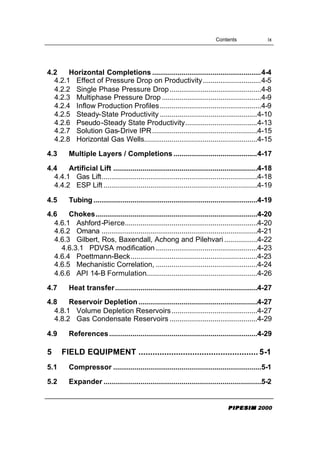
Calculate the average pressure and, for non-isothermal cases, the average temperature in the increment.Select a length increment, Δ L, and estimate the pressure drop in this increment, Δ P.Starting with the known inlet pressure and flow rates.Two-Phase Flow Procedure for Outlet Pressure Calculation: Slip considered, flow regime considered: Usually a different liquid holdup and friction factor prediction methods are required in each flow regimes. Slip considered, no flow regime consideration: The same correlations for liquid holdup and friction factor are used for all flow regimes.Ĭ. No distinction is made for different flow regimes.ī. No slip, no flow regime considerations: the mixture density is calculated based on the no slip holdup. Many correlations have been developed for predicting two-phase flow pressure gradients which differ in the manner used to calculate the three terms of pressure gradients equation (elevation change, friction, and acceleration terms):Ī. This equation is usually adapted for two-phase flow by assuming that the two-phase flow regime and two-phase properties can be considered homogeneous over a finite volume of the pipe. The pressure gradient equation which is applicable to any fluid flowing in a pipe inclined at an angle φ from horizontal was derived previously. Two equations for two-phase viscosity are used by various investigators in two-phase flow: Μ L may be calculated from the oil and water viscosities with the assumption of no slippage between the oil and water phases as follows:Ĭalculation of the two-phase viscosity requires knowledge of the liquid holdup. Three equations for two-phase density are used by various investigators in two-phase flow:ġ- Superficial Gas and Liquid Velocities ( v sg & v sL ):Ģ- Actual Gas and Liquid Velocities ( v g & v L ): Ρ L may be calculated from the oil and water densities with the assumption of no slippage between the oil and water phases as follows:Ĭalculation of the two-phase density requires knowledge of the liquid holdup. It can be calculated directly from the known gas and liquid volumetric flow rates from : Λ L is defined as the ratio of the volume of the liquid in a pipe segment divided by the volume of the pipe segment which would exist if the gas and liquid traveled at the same velocity (no-slippage). Taken as the average of the gas and liquid phases and friction factors are calculated using the single phase The No-Slip correlation assumes homogeneous flow with no slippage between the phases. The remainder of the pipe segment is of course occupied by gas, which is referred to as H g.Ģ- No-Slip Liquid and Gas Holdup ( λ L & λ g ): H L is defined as the ratio of the volume of a pipe segment occupied by the liquid to the volume of the pipe segment. The sum of the holdups of the fluids present is unity. To determine in-situ flow rates, it is necessary to measure the holdup and velocity of each fluid. The holdup of a particular fluid is not the same as the proportion of the total flow rate due to that fluid, also known as its ”cut”.

In multiphase flow, each fluid moves at a different speed due to different gravitational forces and other factors, with the heavier phase moving slower, or being more held up, than the lighter phase. With reference to multiphase flow in pipes, the fraction of a particular fluid present in an interval of a pipe.


As well as, the two-phase flow procedure to calculate the outlet pressure is detailed. Then the pressure gradient equation which is applicable to any fluid flowing in a pipe inclined at an angle φ is depicted. In the next paragraphs, two-phase flow properties (holdup, densities, velocity, and viscosity) will be detailed. The effect of slip is to increase the mixture density and hence the gravity pressure gradient. The difference in velocity between the gas and liquid is termed the slip velocity.

Gas, being less dense than liquid flows with a greater vertical velocity than liquid. Calculation of holdup is complicated by the phenomenon of gas/liquid slip.


 0 kommentar(er)
0 kommentar(er)
